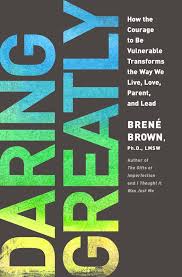This post orginally appeared on tapestryministry.org.
I still think about things Carissa Woodwyk said during the Tapestry Women’s Event in January. She brought up the difference between describing and defining. Carissa encouraged us to be careful in how we describe our children because those words can come to define them. She said, “When you keep hearing the same things over and over, whether good or bad, you come to believe it.”
As I thought about that, I thought about Carissa first and then my daughter. Carissa came to the event as an adopted person, but that’s not all she is. She and I talked about decorating and children’s clothes and the age-old “pop” vs. “Coke” debate. But Carissa is more than her interests. I don’t know all that she is. I do know that being an adopted person is a significant piece—but only a piece—of her story.
Then I thought about my daughter and how I would describe her to someone. My daughter is beautiful, and her face lights up when she smiles. She is a girlie girl, meaning she loves dresses, skirts, dreaming about weddings, princesses, princes, and fairies. She loves pink and purple and everything that sparkles. She loves sprinkles on her pancakes and sour candy (not chocolate) and drawing and dancing and gymnastics. She is who she is, and we love who she is. But even all her interests and passions are not all that’s to her. There’s more.
There will always be more. Most of what we see on the outside is just a way to describe each other, while what defines us takes more time to see.
My oldest daughter is an adopted person, but that doesn’t need to be part of her introduction like she’s at an Adopted Person’s Anonymous meeting, or even like it’s part of her name. Being an adopted person is a piece of her story, but so is being a daughter, a sister, a cousin, a granddaughter and a friend. Our oldest daughter became a part of our family through adoption, and we will treasure that and honor that part of her story. But her story is still going and we hope to guide her to believe and define herself as loved, cherished, appreciated … and I could go on.
Carissa helped me see that I need to be more mindful of the words I’m saying and how I’m saying them. I mean, maybe I’m creating the popstar diva that I live with (hopefully not), but maybe I can learn to describe my diva as a creative, enthusiastic lover of dance and music. I can describe her as a kind and thoughtful big sister.
As you go about your week, listen to what you are saying about your children and to your children. Would you be comfortable with your children turning your descriptions into definitions? The truth is we can all grow in this area as we learn to see our children for who they were made to be, and in turn, teach them to see themselves that way too.
 I am in a season of my life where I feel like I don’t have time to think. Between work, family, errands, friends, church, and taking care of our girls, it seems like we’re always on the go. Oh, and did I mention that we’re in the process of moving too? The last couple months have been a blur.
I am in a season of my life where I feel like I don’t have time to think. Between work, family, errands, friends, church, and taking care of our girls, it seems like we’re always on the go. Oh, and did I mention that we’re in the process of moving too? The last couple months have been a blur.






